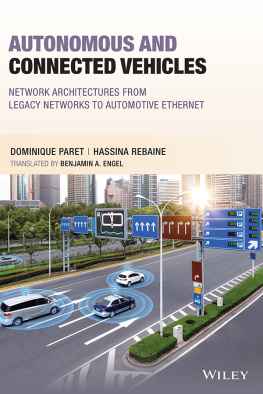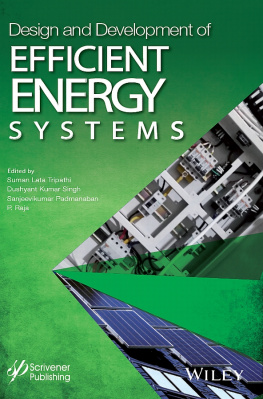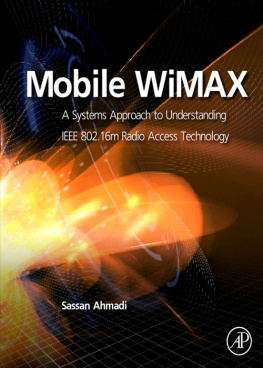This edition first published 2012
2012 John Wiley & Sons Ltd
Registered office
John Wiley & Sons Ltd, The Atrium, Southern Gate, Chichester, West Sussex, PO19 8SQ, United Kingdom
For details of our global editorial offices, for customer services and for information about how to apply for permission to reuse the copyright material in this book please see our website at www.wiley.com.
The right of the author to be identified as the author of this work has been asserted in accordance with the Copyright, Designs and Patents Act 1988.
All rights reserved. No part of this publication may be reproduced, stored in a retrieval system, or transmitted, in any form or by any means, electronic, mechanical, photocopying, recording or otherwise, except as permitted by the UK Copyright, Designs and Patents Act 1988, without the prior permission of the publisher.
ETSI logo reproduced by kind permission of ETSI, All Rights Reserved.
European Telecommunications Standards Institute. Further use, modification, copy and/or distribution are strictly prohibited. ETSI standards are available from http://pda.etsi.org/pda/
3GPP TSs and TRs are the property of ARIB, ATIS, CCSA, ETSI, TTA and TTC who jointly own the copyright in them. They are subject to further modifications and are therefore provided to you as is for information purposes only. Further use is strictly prohibited.
Wiley also publishes its books in a variety of electronic formats. Some content that appears in print may not be available in electronic books.
Designations used by companies to distinguish their products are often claimed as trademarks. All brand names and product names used in this book are trade names, service marks, trademarks or registered trademarks of their respective owners. The publisher is not associated with any product or vendor mentioned in this book. This publication is designed to provide accurate and authoritative information in regard to the subject matter covered. It is sold on the understanding that the publisher is not engaged in rendering professional services. If professional advice or other expert assistance is required, the services of a competent professional should be sought.
Library of Congress Cataloging-in-Publication Data
M2M communications : a systems approach / edited by David
Boswarthick, Omar Elloumi, Olivier Hersent.
p. cm.
Includes bibliographical references and index.
ISBN 978-1-119-99475-6 (cloth)
1. Machine-to-machine communications. I. Boswarthick, David.
II. Elloumi, Omar. III. Title: Machine-to-machine communications.
TK5105.67.M32 2012
621.398dc23
2011044199
A catalogue record for this book is available from the British Library.
Print ISBN:9781119994756
Foreword
It was with great pleasure that I accepted the invitation to write the foreword for this first of two books on M2M and Internet of Things, M2M Communications: A Systems Approach.
Although the market for Machine to Machine (M2M) devices and applications is still developing, we can already foresee that this technology will have a profound impact on our lives, as new application fields are explored. Numerous projections have been made for the growth of M2M: for example estimates include an increase from the current 6 billion cellular devices to eventually over 50 billion cellular-connected machines. Other estimates indicate the total market volume from M2M and Internet of Things reaching $11.5bn by 2012. Indeed the M2M market can already be segmented in numerous ways: distinguishing between hardware devices and software, between connection technologies, or according to specific industrial application segment.
Why are M2M markets taking off now, since many of the technologies used have existed for a number of years? A key factor in the growth of M2M today is the widespread availability of ubiquitous, low-cost connectivity. We have become used to cheap, high-speed home and business internet access. Now in many regions 3G and future LTE mobile networks offer similar access speeds at highly competitive prices. Suddenly a host of applications we have dreamt about and which require internet connectivity have become economically viable.
The large-scale deployment of IP-connected sensors, monitors and actuators, in the home and in industry, enables the development of new interconnected, interoperable services which hold the potential to transform our daily lives. M2M technologies offer a vision of mash-up applications founded in reality, utilising multiple new sources of information, in contrast to the virtual world of mash-up web services. This vision is sometimes referred to as The Internet of Things, but it's not the connected things which are important. Instead, what is important is the information which they provide us, and how we combine and present and use this information, and how we make decisions based upon it. The Internet of Things offers a technical viewpoint. We must look beyond that to see the societal impact, to understand how we will make use of this technology to change our lives for the better.
A key feature of this vision of the future is the variety and range of technologies, functionalities and requirements which we need to take into account. How can we develop a flexible architecture into which we can place today's and tomorrow's technologies? How can we enable interoperability? How can we preserve confidentiality and privacy of information while not restricting potentially beneficial new applications? How can we ensure the reliability of these systems we will build, as we grow increasingly dependent on them? The solutions to these challenges lie not with any one organization or individual. This requires cross-industry thinking, it requires collaboration between the different actors concerned and it requires co-ordination at an international level. Consensus-based international standards are essential to ensure the development of M2M technologies and markets, providing solutions to many of these challenges. ETSI's M2M Technical Committee is currently playing a leading role in driving international standards work in this domain.
Beyond the wider societal challenges, we also face many detailed technical issues. A rapid deployment and adoption of M2M technology will result in new demands being placed on our networks. M2M services often require high efficiency, low overhead, low power consumption and greater flexibility in networks. These requirements will compete with the demand for high speed, low latency and large capacity, which our networks are currently equipped to handle. We may need to re-think how we design and how we manage our networks, if M2M services become as widespread as forecast. We will need to consider new access technologies in order to enable new applications which are not well served by the current radio technologies on the market.
The growth of M2M applications will have a profound impact on the standards which define our telecoms and data networks. ETSI has many years of work ahead of it to develop the specifications and standards which will be needed. I am certain that this book and its accompanying volume will provide us with useful guidance in this task, helping us to better understand the issues we need to tackle in order to create an M2M-enabled world.
Luis Jorge Romero
ETSI Director General
List of Contributors
Samia Benrachi-Maassam
Network & Services Architect
Bouygues Telecom
299 Ter Avenue Division Leclerc
92290 Chatenay-Malabry, France
David Boswarthick
Technical Officer, TC M2M









